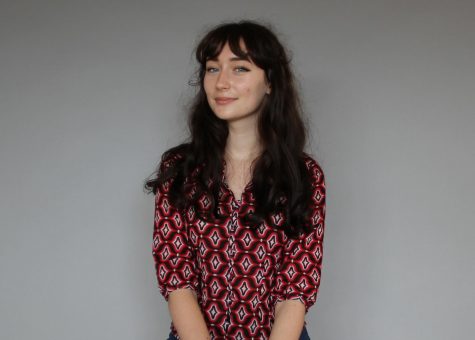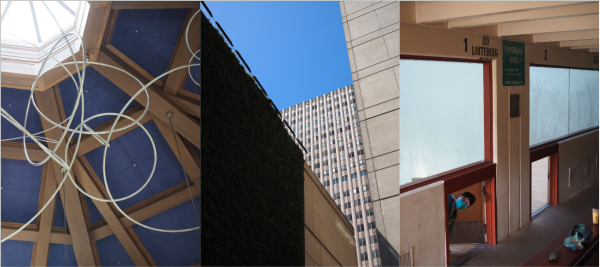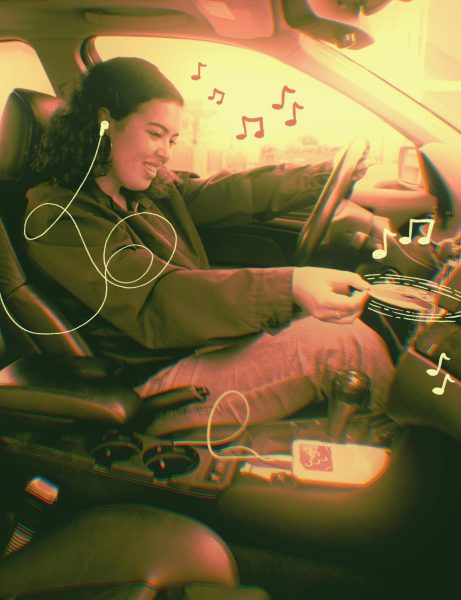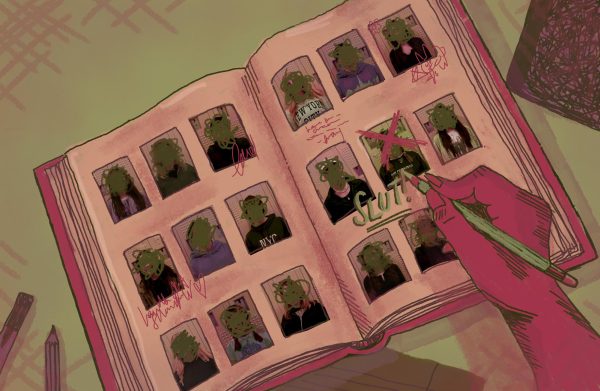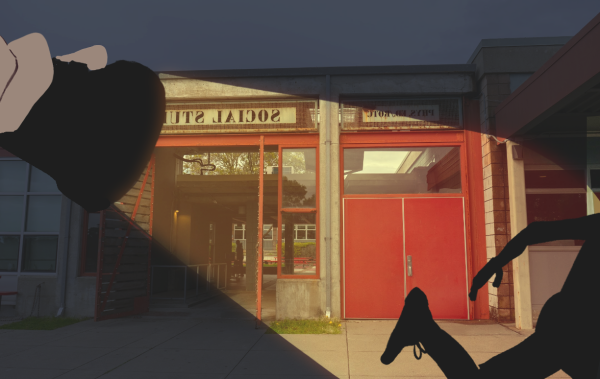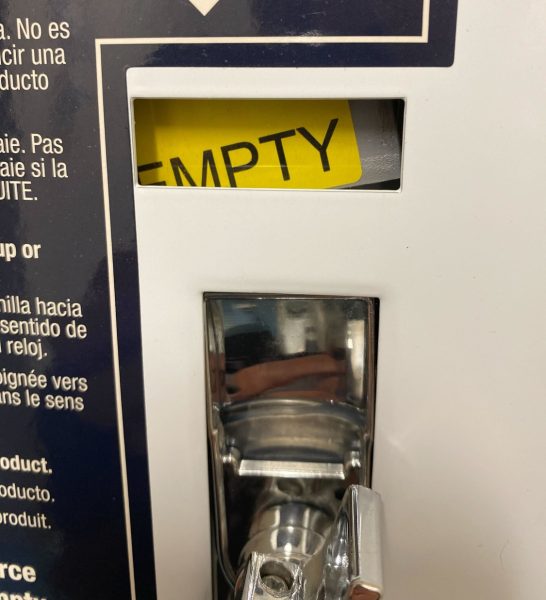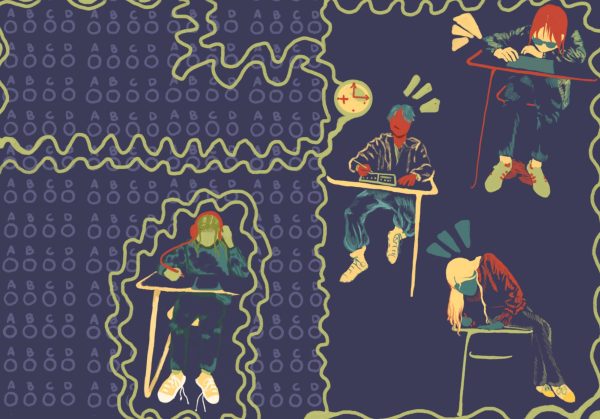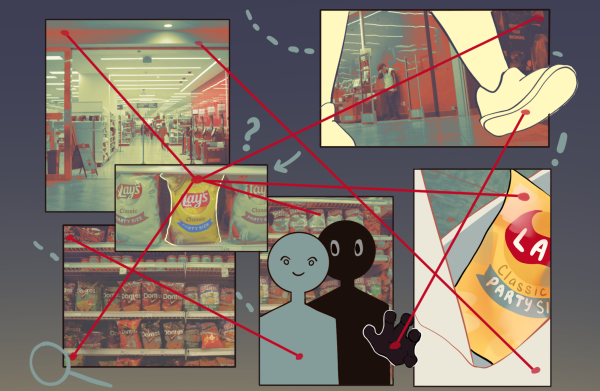A different path: Pursuing art at Lowell
It’s a Sunday evening and Lowell sophomore Emmy Balas is sprawled out on her bed, surrounded by her magazine clipping-covered walls. Music and multicolored lights fill the room as she sketches and writes out her thoughts into a worn-down journal. Her film camera rests next to her, full of memories and stories captured through black and white images. Suddenly, a Google Classroom notification appears on the bright screen of her iPhone. Balas has to do her chemistry homework, which is due the next day. The flashes of blue, red, and yellow are replaced with a bright, overhead light. She pushes the drawings to the side and gets out her notebook from her heavy backpack. Slipping into a world of grey, her passions are put off until she can find another break in her schedule. She has to focus on her schoolwork. After all, she does plan on going into STEM, not art.
Balas is one of the many students at Lowell who don’t plan to pursue art professionally because of widespread pressures and stigmas within the Lowell community. Because of Lowell’s academic intensity and STEM-focused reputation, many students feel like a 4-year college degree and a high paying job, such as medicine or law, is the only socially acceptable path to follow. Lowell needs to have a shift in culture and offer more resources that aid students in discovering art schools and potential jobs that would allow them to follow their true passions – whether it’s art, science, or anything else.
Choosing a post-highschool education or career path is greatly influenced by pressure and opinions from the community one is in. For Balas, a big part of her thought process in not professionally pursuing photography or visual art is fueled by pressure from family members and their ideas of monetary success. Her dad worked in environmental consultation and she is good at science and math in school, so she decided to plan for a future in STEM, feeling that was the only plausible path. These pressures extend not only within families, but into the school community that one is apart of. Balas explained that Lowell doesn’t provide enough inspiration or encouragement to continue art, especially because of the stigma of unimportance that is connected to creative fields. “Art culture is not prevalent at Lowell, especially within career discussions,” she said.
Art culture is not prevalent at Lowell, especially within career discussions. — Emmy Balas
Balas isn’t the only student who has felt these pressures. Leena Barqawi is an aspiring fashion designer who incorporates her visual art into her clothing designs. She hasn’t let stigma at Lowell change her aspirations for a fashion career, but she definitely has felt some discouragement and disapproval from her peers and teachers. It has been difficult for Barqawi to attend Lowell as someone who is fully dedicated to art, while the majority of her peers discuss their AP science classes. Without the crowded class schedules and hectic after school hours that many Lowell students put onto themselves, she has felt a sense of unimportance or inferiority compared to her peers. “I feel like I’m not stressing enough – that I should be stressing more – because all of the people around me are constantly planning for their high-pressure futures,” she explained.
Many Lowell students tend to feel like their future was decided for them when they decided to go to Lowell at 13 or 14 years old. Sebastian Kaplan is a junior at Lowell who aspires to pursue film production and acting. He gained his interest in film going into 8th grade, so when he applied to the film department at the Ruth Asawa School Of The Arts, he did not have enough experience to be accepted. Though he doesn’t regret enrolling at Lowell, he does feel that there is an idea perpetuated in the Lowell community about art being an unreachable dream, rather than an attainable goal. This idea has also been prevalent for Barqawi, whose counselor has questioned her decision to attend Lowell instead of SOTA, as Lowell isn’t known as the school to come to for aspiring artists. Balas has also heard similar opinions about Lowell. “Many kids at Lowell may have artistic interests, but people feel like if you’re artistic, you should’ve gone to SOTA,” she said. “Even if you find these [artistic] passions during high school it’s like, well I’m already here.” The decision to attend Lowell as middle schoolers should not lead students to neglect their artistic interests.
A large problem with planning for an art career is finding a field that combines one’s passions with monetary stability, especially if there aren’t the resources to do so. Sasha Granat is a Lowell student with a passion for theater and playing the flute, but she doesn’t plan on expanding these hobbies into a profession. She also enjoys planning and organizing, so she lets her creative interests remain as hobbies. At Lowell, she hasn’t learned many ways of combining art and non-art related interests. Balas has also had difficulty finding ways to incorporate multiple skills into her aspirations. “I think that we should be informed of more job options, ways that we can combine passions, because I don’t really know of any way to do that,” she said. This lack of guidance leads a lot of students to make a definitive choice; should I be an actor or a lawyer? If students can only choose one field, the well payed, high status job will be the winning choice in most cases. And in time, the other passions will be pushed to the sidelines. With more resources for finding jobs at Lowell, many students could avoid discarding their dreams.
Not all hope is lost for aspiring artists at Lowell. Many students find a way to break into art industries through participating in programs outside of school, searching for resources with counselors, enrolling in VPA classes, and joining art clubs. Barqawi and Balas both attend classes at Youth Art Exchange, a program that offers an array of free art classes for students who want to explore their interests. Kaplan explained that his time at the San Francisco Art and Film Program (also free) has largely influenced his decision to pursue producing and acting beyond high school. Accessible programs like these exist all over the city and often help students gain inspiration and explore their passion for art outside of school, but students need help finding the right resources for him.
So, what can be done to preserve the inspiration and dedication to art that exists within several Lowell students? Lowell needs to become a more open environment that embraces all paths. Programs like Youth Art Exchange and SF Art and Film should be advertised more by counselors and within the freshmen Plan Ahead program. Lowell should provide more help with discovering a job that is actually fit for each student through job fairs, scheduled meetings with counselors, and assemblies focused on career paths. Students should be more open-minded when peers tell them that they aren’t going to a traditional college or that they want to work in a creative field. Students like Balas shouldn’t have to push their skills that they care so much about to the side, it should be a viable option for the focus of their lives. With more encouragement, Lowell could birth a new generation of Shakespeares, Beatles, and Warhols. It would be a shame to crush the artistic spirit that lives within so many Lowell students.
